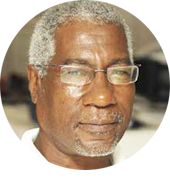
Saint Lucia has seen two ‘Halcyon Hotels’: Halcyon Days in Vieux Fort (now Coconut Bay) and Halcyon Beach Club at Choc in Castries (now Sandals Halcyon).
They were two popular hotels here back in the mid-70s, when Caribbean tourism was still being sold to the world as nothing more than the best place for rest and relaxation in sun, on sand and at sea – and the best ‘rum punch’.
There was yet no special tourism shipping berth and no duty free shopping complex (like at Pointe Seraphine), no malls and arcades dedicated to visitors (like La PlasCarenage), no zip lines or aerial tramways (like Rainforest Sky Rides) and no special Tourism Taxis (TX).
Back then tourism was slow, but steady, much better than two decades earlier (in the 60s), when perhaps one or two ‘tourist boats’ would come per month to the Northern Wharf in Castries, like the “Yankee Clipper’ and other Windjammer yachts (precursor to today’s ‘Barefoot and Backpack’ cruises), and the trans-Atlantic cruise liner ‘Ascania’.
In those days (the second half of the 20th century), visitors and sailors, including sailors from the British ‘war ships’ that called often, were all welcomed by the island’s two tourism ambassadors: the now-legendary ‘Scrubb’ playing a steel pan or two and ‘Miss Millie’ selling beads, dolls, shells and other local handicrafts and trinkets.
The locally-owned hotels back in the day included ‘Villa’ at the bottom of Morne Road, ‘Blue Waters‘ (later called ‘Red Lion’ and then renamed ‘El Lion Rojo’ at the southern end of Vigie Beach and ‘Malabar’ (now Rendezvous) at the other end.
‘Hurricane Hole’ at Marigot, ‘The Still’, ‘Diamond Baths’ and Colonel Taplin’s ‘Blue Heron’ motor boat in Soufriere and the ‘Bird’s Nest’ (now Kimatrai Hotel) in Vieux were the main attractions on the West Coast — and Cox and Company and Barnard & Sons were about the only two shipping and tourism agents in town.
Rodney Bay was nothing like we know it today: The Marina was still largely empty of yachts, the area between the Gros Islet Highway and The Ramp (The Rodney Bay Strip) was nothing like it looks now, the entrance to that area being only through the two columns marked ‘US Naval Base’ that covered the entire area during World War II.
The decade between 1970s and 80s saw the likes of Cunard La Toc (now Sandals La Toc formerly ‘Regency’), Holiday Inn (in the area occupied by the Rex Group), Saint Lucian (formerly Smugglers and where Royalton now is), Le Sport, Windjammer Landings — and others — arrive, steeped in the traditional European Plan arrangement where visitors paid their way – in cash or by cheque — all the way from airplane or ship to shore, for hotel stay, meals and all other holiday expenses before joining the return flight or trip back home.
Arrivals by land and sea increased exponentially on the global scale and reflected in serious changes in Caribbean tourism, needs for tourism services expanding and the industry eventually eclipsing agriculture as the island’s main economic income earner.
Enter Sandals with Butch Stewart’s purchase of the ailing La Toc Hotel (previously owned by Courts Line) and enter the largely pre-paid All-Inclusive arrangements that better suited those visitors wishing to travel without money, or those who could previously barely have afforded a once-in-a-lifetime vacation anywhere.
Initially, opposition to the All-Inclusive concept was wrapped around sensitive and senseless, mainly sentimental and diversionary, non-business arguments like it was ‘depriving taxi drivers from negotiating trips’ and ‘robbing bartenders and hotel housemaid of tips.’
But with time, Sandals’ expansion (addition of Sandals Grande, formerly Hyatt Hotel at the Pigeon Island Causeway) and arrival of new properties meshing more with the shrinking market share in a more competitive global market, assured the necessary industry adjustments took shape here with emergence of the likes of ‘Jalousie’, ‘Jade Mountain’ and ‘Ladera’ in Soufriere, ‘Coconut Bay’ in Vieux Fort, ‘Discovery’ (now ‘Capella’), ‘Oasis’ and ‘Rainforest Hideaway’ at Marigot – plus many, many others in Castries, Gros Islet – and in between.
HALCYON TIMES: It’s halcyon days – and nights — at Sandals Halcyon as it celebrates its 25 year (Silver Anniversary), at the start of which it’s worth noting that with four properties on the island – and plans delayed for a fifth – the Jamaica-based Caribbean group has moved big into Saint Lucia and had significant impact on tourism here over the past few decades.
But not only in Saint Lucia.
Sandals Resorts International (SRI) is now the Caribbean’s Number One Tourism Brand, present in seven territories (islands and groups of islands) and the Number One promoter of the Caribbean worldwide as a most unique tourism destination.
It’s impossible to go anywhere in the world today and watch international TV news programmes on mainstream stations with global reach and not see a Sandals promotional advertisement offering a ‘luxury included’ holiday for couples and families ‘at 60% less’ – plus the added luxury of ‘staying at one and playing at all.’
The Sandals (and Beaches) Group is still the fastest-growing Caribbean brand, repeatedly winning more ‘Best in the World’ records than any other.
Saint Lucia is also its leading Caribbean destination outside Jamaica, its fifth hotel – still on paper but with a foundation already in place – to be the first it will have actually built from scratch here.
Every island nation without one will wish to have a Sandals property – and (maybe) Sandals would also like to have its footprints on every Caribbean beach.
But neither is easy and each remains a dream or a wish, as the region has learned over time.
Getting Sandals to build a new or takeover an old property takes tough negotiations in which both sides seek the best, but most times resulting in governments agreeing to requested concessions that sometimes later attract criticism.
In the past year, the Sandals Group has made the news with headlines involving disputes or misunderstandings over interpretations of agreements regarding payments of varying types of hotel and tourism-related taxes in Antigua and Barbuda, Trinidad & Tobago, Turks & Caicos Islands, Barbados and Saint Lucia.
But none of these issues are any longer in the news, with negotiators returning to table where possible – and Sandals’ decision to cancel plans for a Tobago resort having been explained.
Sandals and Beaches stem from the unquestionable leading Caribbean hotel and vacation brand and their continuing success record doesn’t seem destined to end soon, except for unforeseen unpredictable events of the type that come once every ‘Blue Moon’.
Conventional wisdom has it that Sandals would already have had its Causeway property going (next to The Landings) if a previous government hadn’t opted to go with the conventional wisdom of ‘not putting all our eggs in one basket.’
But the Caribbean’s most successful company of its type still got permission to build that same ‘Mother of All Sandals Properties’ in Saint Lucia from another government that felt differently about the Sandals basket.
Sandals and its top executives are well aware of their brand’s ultimate grand place in the Caribbean and its significant contribution to national and regional incomes through taxes, wages on construction sites and payments to staff at existing and expanding properties and purchasing of local goods and services.
Governments and politicians involved in negotiations with Sandals execs sometimes complain that the latter can look and sound aggressive, even ‘overbearing’ at the table, which is natural in such cases.
But it would be unfair, if not foolhardy, for governments to expect the group not to have well learned, over decades, how to deal and play its cards.
Responding to critics, Sandals always points to what it’s doing, voluntarily, to ‘help’ Caribbean people through its Sandals Foundation and many other individual national or regional initiatives, to underline its Corporate Responsibility to the region that made it – and which it’s also played a significant part in turning into a destination better known today the world over, than ever.
The company has also trained thousands of Caribbean hotel industry personnel over the decades, many growing within the Sandals chain, but the majority standing out or leading the charge in other hotels they end-up at.
SRI has also remained true to the Caribbean that crated it and can only be expected to expect that the region’s governments and people will continue to see and treat it as The Caribbean Brand that it is, which, more than any other, has helped make The Caribbean itself a Number One brand globally.









